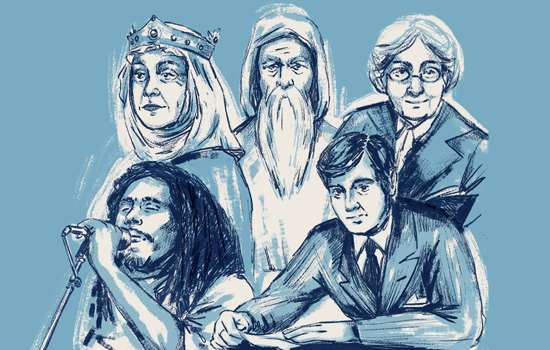St Aelred at Rievaulx Abbey
The ruins of Rievaulx Abbey in north Yorkshire stand as a monument to its inspiring former abbot, who oversaw much of its expansion.
Aelred of Rievaulx (1110–67) can justifiably be counted among the great monastic figures of the Middle Ages. Born in 1110 to Anglo-Saxon parents, aged 14 he entered the service of King David of Scotland. Aelred’s talents meant that he became the king’s steward, entrusted with diplomatic missions. It was during such a trip to York in 1134 that Aelred learned of Rievaulx Abbey. Founded in 1132, it was home to a community of reforming Cistercian monks.
The spiritual rigour of the Cistercians appealed to Aelred and he joined the Rievaulx community. He rapidly adjusted to the rhythms of life within the cloister. In 1142, Aelred was appointed as the abbey’s novice master. It was at this time that Aelred wrote The Mirror of Charity, a guide for novices. In this he vividly evokes the hardships and spiritual rewards of life as a Cistercian monk.
Aelred was then dispatched to serve as abbot of Revesby, a newly founded Cistercian abbey in Lincolnshire. However, in 1147 he was recalled to Rievaulx and appointed abbot. The abbey prospered under his leadership, the community expanding to include as many as 640 men.
During this period, Aelred oversaw the construction of many of the abbey’s buildings, including the church, cloister, chapter house, novices’ chamber and infirmary. In keeping with the austere ideals of the Cistercians, which Aelred enthusiastically embraced, their ornament was minimal.
Aelred’s services as a preacher and diplomat were much in demand and he was also a prolific author. His best known work is On Spiritual Friendship, which provides an ideal of friendship that many people still find inspirational.
Aelred’s final years were blighted by illness. He died at Rievaulx on 12 January 1167 and was buried in the abbey’s chapter house. In c.1220, the east end of the abbey’s church was rebuilt to house Aelred’s relics, or physical remains. These were venerated until the abbey’s suppression in 1538. The ruins of the abbey remain an enduring testimony to this loving, compassionate and inspirational man.
Words by Michael Carter
Illustration by Jasmine Whiteleaf


